| Autres noms | guillotine blades, guillotine cutters, guillotine knife, industrial blades for paper, paper converting knives, paper cutting blades, paper cutting knife materials, paper slitter blades |
|---|---|
| Lieu d'origine | Chine |
| Application | Plastique, Papier, Carton, Non-tissé, Film, Feuille, Étiquettes, Ruban adhésif, Textile, Emballage, Tapis, Sacs, Caoutchouc |
| Matériel | 65Mn,9CrSi,Cr12MoV,SKD-11,HSSl |
| Numéro de modèle | CV-RS |
| Service OEM | Disponible |
| Modalités de paiement | LC, T/T, Western Union |
| Emballer | Boîte en carton, Dans des caisses en bois |
| Délai de livraison | 7-20 jours |
Partager à:
Industrial paper cutting knives, also known as paper cutting blades or guillotine blades in some contexts, are robust and precision-engineered cutting tools designed for use in industrial paper cutting machines. These knives are built to efficiently and accurately cut large stacks or continuous webs of paper and paperboard in high-volume production environments. The term “industrial paper cutting knives” emphasizes their heavy-duty construction and suitability for demanding, continuous operation in manufacturing and converting processes within the paper, printing, and packaging industries.
Couteaux de coupe de papier industriels are essential tools in various stages of paper processing and converting. Their key applications include:
The selection of material for industrial paper cutting knives is crucial for achieving optimal cutting performance, longevity, and resistance to wear, especially when dealing with various paper types, including abrasive and coated papers. Common materials include:
Coatings such as titanium nitride (TiN) or chromium can be applied to enhance surface hardness, reduce friction, and improve corrosion resistance, further extending the life of industrial paper cutting knives.
Couteaux de coupe de papier industriels come in various shapes and configurations tailored to specific cutting processes and machinery. Common shapes include:
The geometry of the industrial paper cutting knife, including the blade angle, bevel, and edge sharpness, is critical for achieving clean, accurate cuts and maximizing blade life. The correct selection of blade shape and material depends on the type of paper being cut, the cutting process, and the production volume requirements.
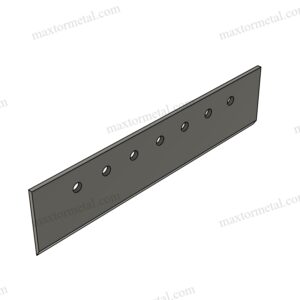
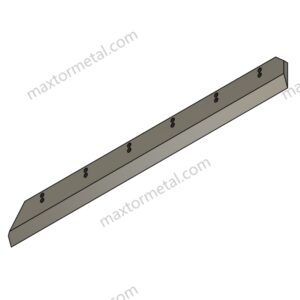
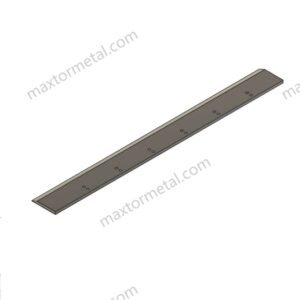

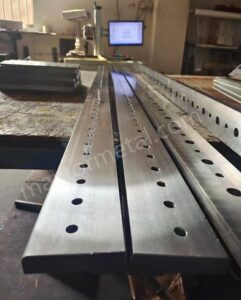
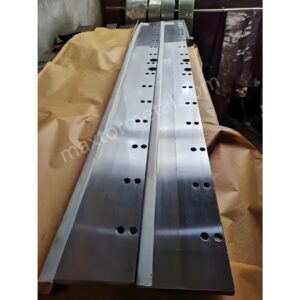
Profitez facilement de la commodité de l'importation, du transport au dédouanement, nous gérons l'ensemble du processus, il vous suffit de payer la TVA et d'attendre que les marchandises arrivent à l'entreprise.
Nous avons vu ses lames utilisées dans d'innombrables applications et sommes prêts à gérer tout projet que vous nous lancez, offrant précision, durabilité et prix compétitifs inégalés.
Que vous nous fournissiez des dessins, des croquis ou des échantillons, nous sommes en mesure de les dessiner et de les fabriquer pour vous. Nous avons également la capacité d'aider à modifier les conceptions et les spécifications existantes pour améliorer presque toutes les applications d'outillage industriel. Veuillez contacter notre équipe commerciale dédiée pour discuter de vos besoins spécifiques.
Une série de tests et d'inspections sont effectués pour contrôler la qualité, y compris l'inspection du premier article, l'inspection des matériaux entrants et les matériaux certifiés, l'inspection de la qualité en cours de processus et l'inspection de la qualité finale.
Que vous soyez importateur, distributeur, grossiste ou utilisateur final, nous vous invitons à nous rejoindre avec un MOQ minimum, aucun tracas pour la demande et plus de liberté pour l'achat.
Devenez votre moniteur exclusif, transmission régulière de chaque nœud important de la chaîne de production, quelle que soit la distance, la progression du produit dans la mesure du possible à saisir !
Le guide ultime pour l'entretien des lames de coupe à guillotine : prolonger la durée de vie et optimiser les performances
Nanjing Metal Industrial CO., Limitée
Parc industriel Mingjue, Lishui, Nanjing, Jiangsu, Chine
Restez au courant de nos dernières nouvelles.